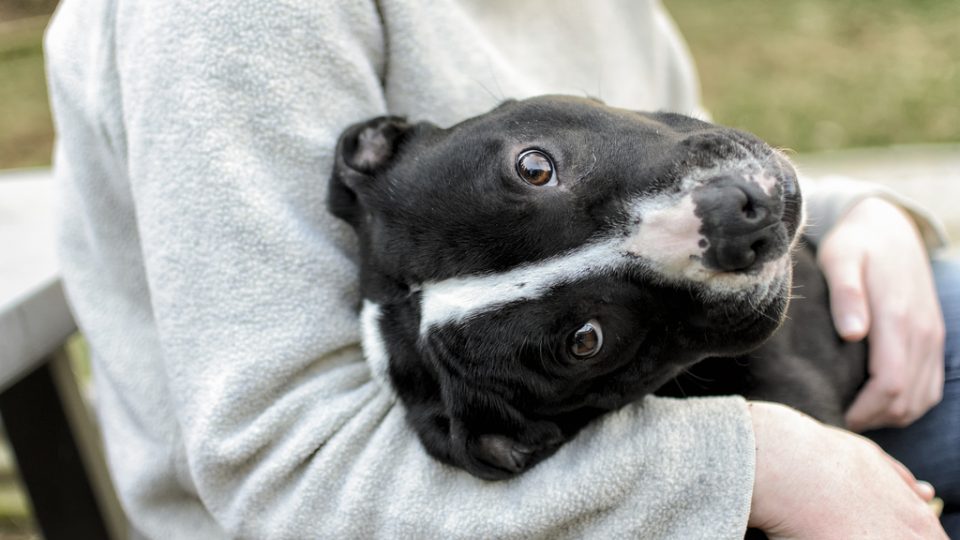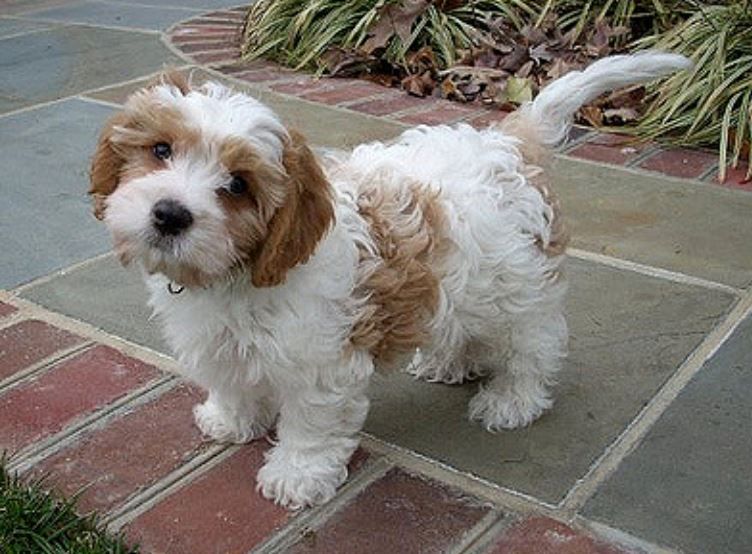Are you looking for a canine companion that’s hypoallergenic? Do you or someone in your family suffer from dog allergies, but would like to have a dog? Then we’re here to help you! We’ll cover information you need to know about hypoallergenic dog breeds and which ones may be the best fit for your allergies!
Connect with a verified veterinarian in minutes. Licensed vets are available 24/7 to answer your questions. No need to worry about your furry family member.
Is Any Dog Breed Truly Hypoallergenic?
The truth is that any dog breed can cause allergies—in other words, there’s no such thing is a hypoallergenic dog breed. However, there are dogs that may cause fewer allergy symptoms in those sensitive to dog allergens. First you need to understand allergies. Allergies are caused by a hyper-active immune system. If you have allergies, your immune system goes into hyperdrive trying to find substances it considers dangerous to your body. In all truth, these substances are not harmful for most people; however, they can be harmful if your immune system encounters certain substances.
When it comes to dog allergens, the problem is not with the dog’s fur. Rather, the problem lies with specific proteins that dogs carry. These proteins are found in the dog’s saliva, urine, dander, etc. When a dog licks his fur, the proteins will be introduced to his fur, skin and surrounding environment. Not only that, but dander shed by a dog will stick to many things in the environment—everything from clothing and furniture, to the walls and flooring. As a result, it might be advisable to look for dogs that don’t shed as much. These have the potential to cause fewer allergy problems in most people.
Another thing to consider is that some allergy sufferers have more problem around certain types of dog hair. For instance, they may have more allergy symptoms around dogs with short hair, but not feel too badly around dogs with long hair. It all depends on the type of protein that causes your allergy symptoms. Some vacuums for pet hair may be particularly efficient at reducing allergies as the volume of lose hairs can then be controlled on a regular basis.
If you see hypoallergenic dogs for sale, just be aware that there are no such thing as hypoallergenic dog breeds. You may be fine around short-haired dogs but have allergy problems around dogs with longer hair. It’s possible to even be sensitive to a specific dog, but fine with another dog. Take the time necessary to explore your allergies and what makes them worse when you’re around dogs. That way, you’ll find the best dog for you and your allergies.
Hypoallergenic Dogs Good with Kids
Are you looking for a hypoallergenic dog for your kids? Here are some ideas that may be a good fit!
- Portuguese Water Dog: these dogs put off little dander and are almost shed-free when it comes to their hair.
- Miniature Schnauzer: a medium-sized dog, they’re known for their intelligence and their protective natures. They don’t shed very much and are easy to groom.
- West Highland White Terrier: these small dogs are known for their intelligence and their friendly personalities—and they don’t shed.
- Bichon Friese: these friendly dogs are non-shedding, but require frequent grooming to keep their coats from tangling and matting.
- Shih Tzu: small dogs, with longer hair, that don’t shed very much. They also don’t have much dander.
These are kid-friendly dog breeds that don’t shed. However, never leave very young children or babies unsupervised around any dog. You just never know what might cause a dog to attack—the innocent pulling of an ear or tail could cause any dog to go after a child. While a food allergy in dogs is common, your dog cannot be allergic to humans.

Review symptoms, medications & behavior to keep your pets healthy with a Vet Online in just minutes.
Ask a Vet Live NowHealthiest Dog Breeds That Don’t Shed
If you’re looking for the healthy dogs that don’t shed, then we’ve got a list for you!
Tibetan Terrier: these dogs are generally known for their shaggy coat! They’re mischievous and intelligent fur babies that are dedicated to their loved ones. They make wonderful companion animals for kids, adults, and even seniors. They also make great watch dogs that are also gentle and loyal. This breed does need some grooming, but otherwise are easy to care for.
Havanese: these cute Cuban natives are small dogs known for their sunny dispositions. They are sociable and fun, and make great canine companions for those living in apartments. Their gorgeous silky coat doesn’t shed; however, they do need to be groomed (brushed) daily to keep their hair free of tangles and mats.
Scottish Terrier: this small dog packs a lively personality wherever he goes! Known for their confidence and independence, these pups are also highly recognized by their dignified demeanor. The Scottish terrier’s wire coat is soft and dense, with little to no shedding. They do require grooming on a regular basis—at least weekly brushing. Their coat may also require clipping, which should be done on about a 6-8-week schedule.
Wheaten Terrier: these medium-sized dogs are beautiful and have vivid personalities. They have a fine, soft coat the color of wheat—this is where the breed gets its name. They don’t shed very much and will require regular grooming (brushing) about 2-3 times a week. Some owners also have their fur baby’s air clipped to avoid matting and tangles. If you choose a Wheaten Terrier, expect to be met at the door each day with joyful bounds and the “wheaten greeting.” Some dogs love to jump up and try to lick their loved one’s face.
Poodles: are another great option if you’re looking for low-shedding dogs. These elegant, proud, smart dogs are known for being affectionate. These dogs are loyal and loving—they also love to play! Due to their non-shedding coat, poodles require regular grooming and clipping to keep his coat in good shape and free of tangles.
Labradoodle: this breed is a cross between a Labrador Retriever and a poodle (miniature or standard). These dogs are known for their intelligence, friendliness and for being somewhat active. Labradoodles are smart, friendly and affectionate, making them a great addition to your family. This breed needs to be brushed about every other day and may need to be clipped every 8-12 weeks.
Maltese: these gentle, playful dogs will charm your heart for certain! They’re small, but non-shedding with long, silky hair. These fun little dogs also make wonderful watchdogs. When it comes to grooming, expect to brush his coat daily to prevent mats and tangles. Even so, they’re great for anyone who may be allergic to dogs.
While these dog breeds are all known to be some of the healthiest, keep in mind that all dog breeds and/or mixed-breeds can develop health issues. And remember that no one breed is hypoallergenic.
You may need to spend some time with specific dogs and breeds in order to find a dog that doesn’t set off your allergies.
Handling Dog Allergies
If you’ve already got one of the breeds mentioned previously in this article, then how can you handle your dog allergies? There are a few things you can do to control and manage your allergies. Finding your fur baby a new home should only be a last resort.
1. Consider a change in flooring: a change in flooring can have a major impact on your allergies. Most people find that getting rid of the carpet greatly improves their allergies. If possible, opt for flooring such as:
- Hardwood or laminate flooring
- Concrete flooring
- Tile
These are all easy to clean and maintain. To keep floors clean and allergen-free, be sure to choose a vacuum that uses HEPA filters and look for one that has more than one filter. HEPA filters trap small particulate matter, keeping your entire home cleaner and more allergen-free.
2. Furnishings: opt for leather sofas and chairs when possible. These are easy to clean and will not trap dust and dander like fabric-covered furniture. You might also consider using shutters or blinds instead of curtains. Washing all curtains about once a month if your allergies are very bad. And don’t forget to wash your bedding and pillows. Sheets and blankets should be washed weekly. Pillows, too, could use a weekly wash, but you can also put them in the dryer on high to remove dander and dust mites.
3. Regular cleaning: this one doesn’t sit well with most people, but if you have dust and dander allergies, then daily cleaning needs to become a part of your life. Or at least more regular cleaning—more than once a week. Cleaning all surfaces every day or even every other day works to remove the dander and dust that could be causing your allergies. Daily vacuuming and washing of floors also helps.
4. Grooming and bathing—for your fur baby: weekly baths are like cleaning your home—the bath removes dirt, dander and other allergens (think pollen) from your fur baby’s coat. Some very efficient brushes for shedding dogs will help you remove all lose hair before it evens touches the floor. However, avoid bathing your dog too often, as this can lead to skin irritation, inflammation and even cause him to develop allergic reactions and/or skin infections. Check with your vet for recommendations on how often you should bathe and groom your furry companion.
In between baths, you might consider using dog wipes or even dry shampoo designed for dogs to help remove allergens and dirt.
5. Wash your pet’s bed, too: don’t forget to wash your fur baby’s bed, too! Allergens, like dander and pollen, along with dirt quickly become entrapped in your pup’s bed. Washing his bedding will keep it cleaner and it will smell better, plus wash allergens down the drain.
6. Pet-free zones: consider keeping your precious fur baby out of certain areas. Creating an allergen-free room helps you better manage your contact with allergens. Think of it as a safe-room, where you can go to recover and rest. When your allergies become too overwhelming, then spend some time in your allergen-free zone. You’ll feel better and be able to keep your fur baby, too.
7. Consider allergy testing and treatment with medications: if your canine companion causes your allergies to really get out of whack, it might be time to consider seeing the doctor for allergy testing and allergy treatment. If your doctor finds you have dog allergies, they may recommend and prescribe medications, such as antihistamines, to help you cope. Allergy shots may also be helpful in dealing with dog allergies.
When it comes to dog allergies, don’t let them keep you from getting a canine companion. You have many options to help you cope, such as finding a non-shedding breed that doesn’t make your allergies worse. Regular grooming can help, as can keeping your home clean. If you want a fur baby, explore all the options available. You may find just the right combination that works for you—and you’ll end up with a furry companion that will love you for life!
Connect with a verified veterinarian in minutes. Licensed vets are available 24/7 to answer your questions. No need to worry about your furry family member.

Kim
Kim is a talented author, who loves animals especially dogs. She engaged in writing books and articles relating to animals a decade ago. Kim resides in Chicago with her husband and son. The family is the proud owner of a dog and a parrot (Jack and Lily). Kim wanted more than these two pets, but her husband put his foot down... She often visits elementary schools to talk to the kids about what she learned about pets and how they could learn from them.
Review symptoms, medications & behavior to keep your pets healthy with a Vet Online in just minutes.
Ask a Vet Live Now



